17 Retro Living Room Layouts That Made No Sense (But We Loved Them)
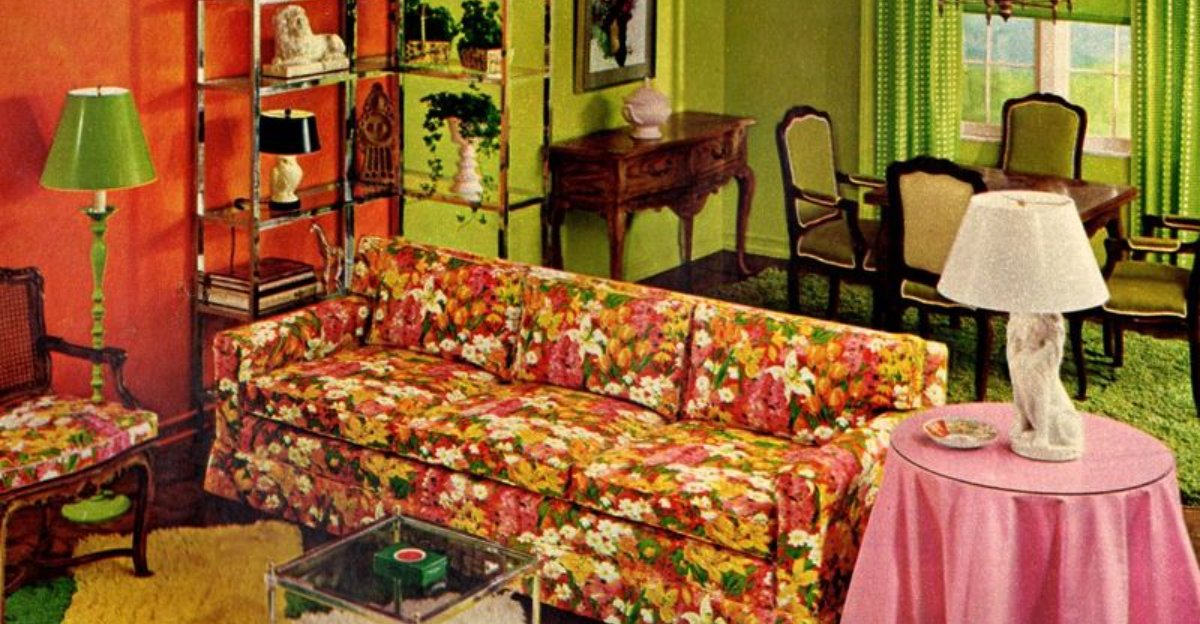
Oh, those gloriously chaotic living rooms from decades past! You know the ones—where function went on vacation, and vibes ruled the roost.
My grandma’s house was the crown jewel of this glorious madness. Walking into her living room felt like stepping onto the set of a vintage sitcom where every piece of furniture had a personality and an agenda.
The infamous conversation pit? More like a stylish sinkhole for cousins, pets, and the occasional confused guest. Navigating from the door to the sofa required the agility of a ninja and the patience of a monk—sidestepping lava lamp cords, towering end tables, and shag carpet that threatened to swallow your socks whole.
And yet, despite the delightful impracticality, it was magical. It was where laughter echoed, snacks mysteriously disappeared into floral cushions, and memories were made. Retro living rooms may have defied logic, but they embraced heart—and that’s what made them unforgettable.
1. Conversation Pits: The Indoor Quicksand
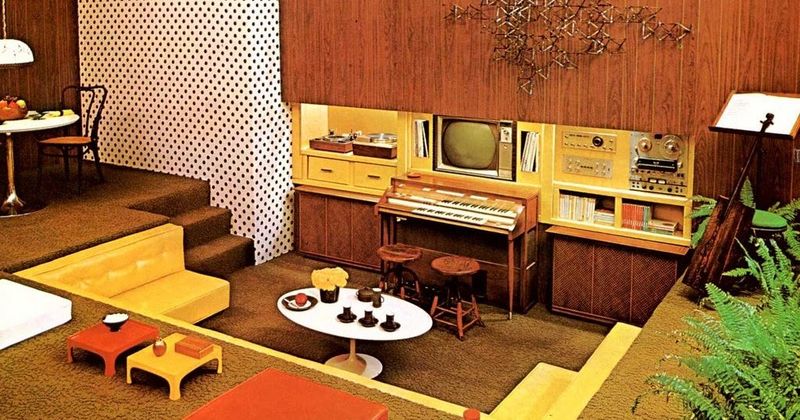
Ah, the infamous conversation pit! My uncle’s 1970s home featured this sunken living room disaster that claimed at least one tipsy relative at every holiday gathering. These architectural oddities—essentially floor holes surrounded by built-in seating—were supposed to encourage intimate chats but mostly encouraged twisted ankles.
The worst part? Trying to vacuum those awkward corners or retrieving a dropped remote without performing a full archaeological expedition. And heaven help anyone attempting to rearrange the furniture!
Despite these flaws, conversation pits created undeniable cozy vibes. There was something magical about descending into that plush-carpeted crater, like entering a secret clubhouse where adults could pretend they were sophisticated while sitting on what was essentially a glorified pillow fort. No wonder today’s designers are bringing back modified versions—minus the neck-breaking entry points.
2. TV Shrine Arrangements: The Neck-Craning Nightmare
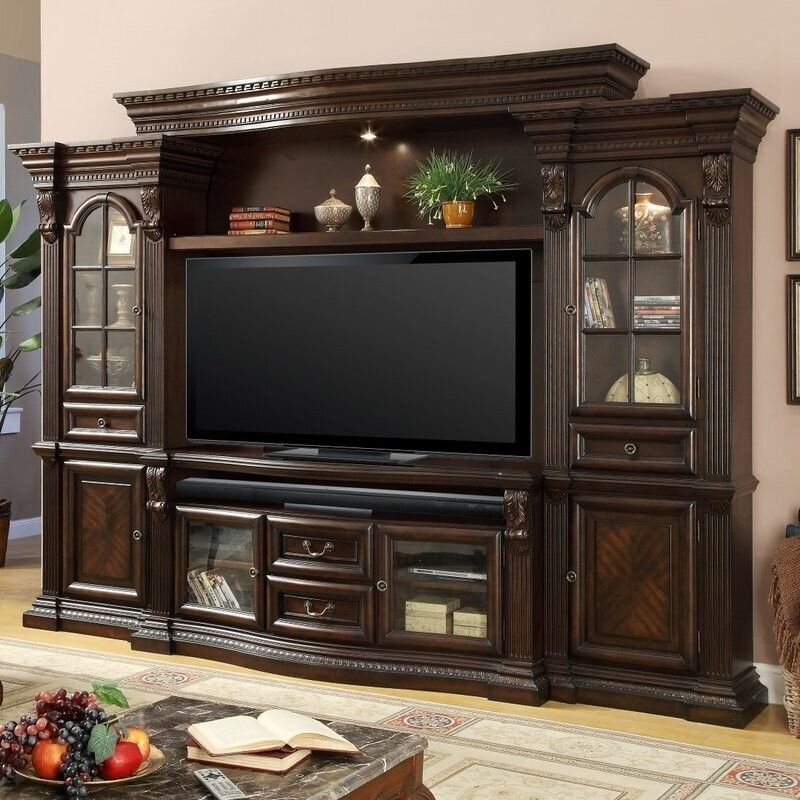
Growing up, my neighbor’s living room featured a television perched so high on their wall unit that watching Saturday morning cartoons required binoculars and a chiropractor appointment. Every piece of furniture pointed toward this electronic altar like worshippers to a deity, creating a bizarre semicircle that left no practical way to actually converse with fellow humans.
The massive wooden entertainment center housing this TV typically weighed approximately 900 pounds and contained exactly three VHS tapes, seventeen ceramic figurines, and a collection of TV Guides dating back to the Nixon administration. The remote control, naturally, was wrapped in plastic for “protection.”
Family photos adorned every remaining inch of wall space, creating an audience of watchful relatives who silently judged your television choices. Yet somehow, these awkward arrangements fostered family togetherness—if only because everyone shared the same collective neck pain!
3. Plastic-Covered Furniture: The Sticky Situation
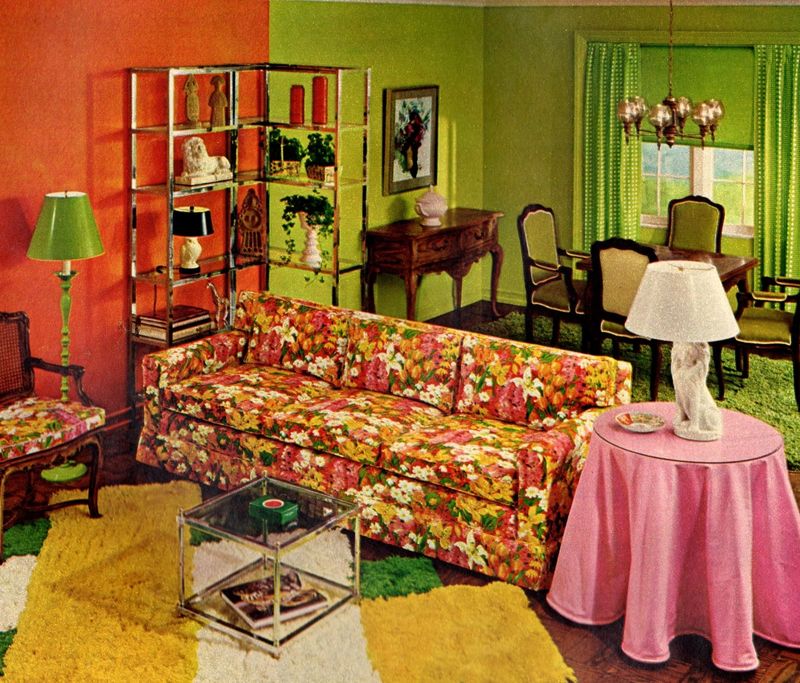
My grandmother’s pristine plastic-wrapped sofa squeaked like a distressed dolphin whenever anyone dared to sit on it. This bizarre preservation technique—supposedly protecting fancy furniture for some mythical “special occasion” that never arrived—turned comfortable seating into sweaty, slippery torture devices during summer visits.
The plastic covers typically extended to every upholstered surface in the living room, creating an environment where static electricity became a genuine hazard. One moment you’d be innocently shifting position, the next you’d be accidentally zapping Uncle Frank across the coffee table.
Despite being utterly ridiculous, these plastic-wrapped living rooms represented a special kind of love. Your grandmother wasn’t just being peculiar—she was preserving her beautiful things for future generations, even if it meant nobody could actually enjoy them in the present.
4. Shag Carpeting: The Indoor Pasture
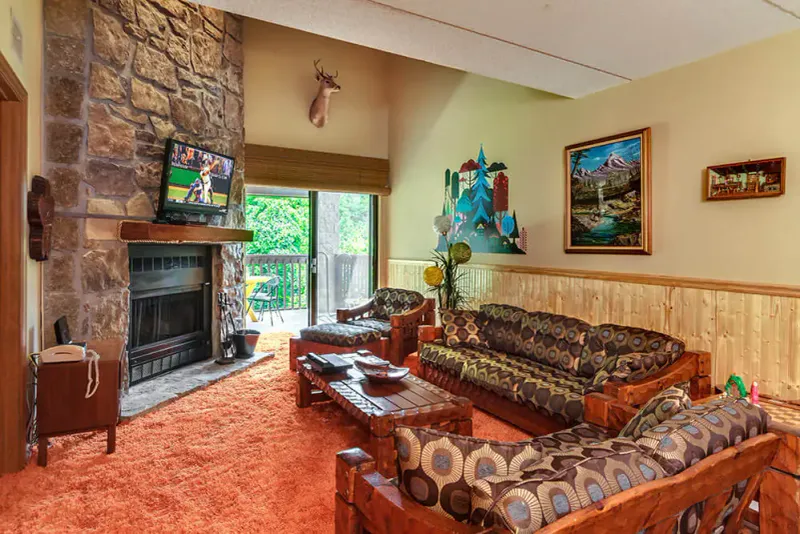
Walking across my aunt’s living room in the 1970s felt like traversing a technicolor sheep farm. Her orange shag carpet—standing approximately three inches tall—concealed dropped items with the efficiency of a black hole, swallowing car keys, coins, and occasionally small children without a trace.
Maintaining this fibrous ecosystem required specialized tools, including the dreaded shag rake. Yes, a literal rake for your indoor floor! Spills became five-alarm emergencies since cleaning liquids from these fuzzy floor forests required chemical engineering degrees and possibly an exorcist.
The true magic of shag carpeting revealed itself during winter months when its insulating properties turned even the draftiest living room into a cozy haven. Plus, nothing cushioned an impromptu living room wrestling match quite like those plush polyester strands.
5. Circular Sofas: The Conversation Carousel
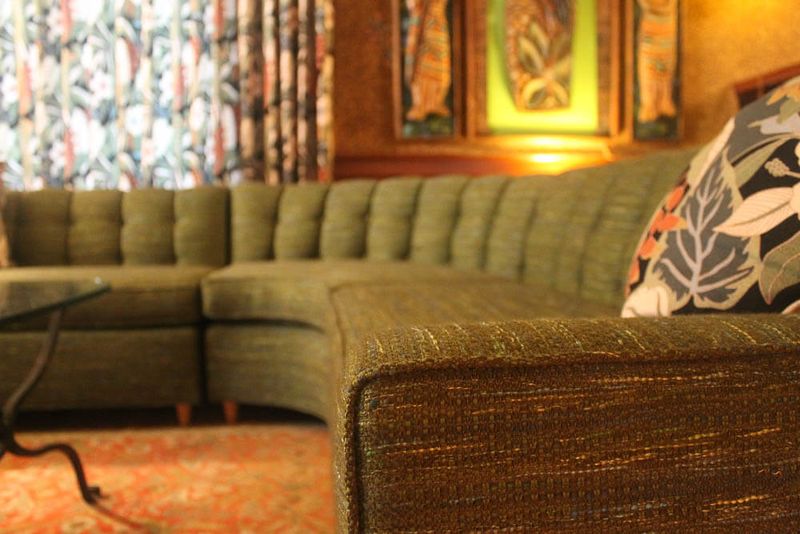
The circular sofa my parents installed in 1968 looked like it had teleported directly from the Starship Enterprise. This mod monstrosity—usually upholstered in eye-searing colors like mustard yellow or avocado green—dominated the entire living room like a fabric-covered UFO that had crash-landed through the ceiling.
Trying to exit these rounded beasts often required climbing over the back or awkwardly shuffling past everyone’s knees. Nobody ever acknowledged the fundamental problem: conversations involving more than three people meant someone was always talking to the back of someone else’s head.
For all their impracticality, these groovy seating arrangements created a democratic social space where hierarchy disappeared. Everyone faced everyone else in a continuous loop of interaction—no corner spots for the antisocial!
6. Beaded Curtain Room Dividers: The Hair-Catching Hazard
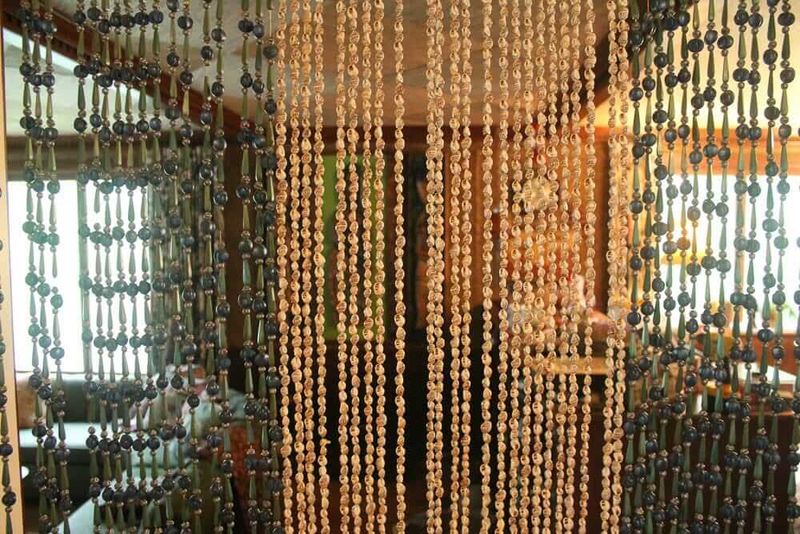
The summer I installed beaded curtains in my first apartment, I learned a painful lesson about impractical room dividers. These dangling strings of plastic or wooden beads—meant to create “separate spaces” without actual walls—became infamous hair-pullers and forehead-slappers for anyone taller than a garden gnome.
Walking through these decorative doorway torture devices required a specific technique: part the beads with dramatic flair, then dash through before they swung back to attack. The constant clacking sound as they collided became the soundtrack to countless teen hangouts and basement rec rooms across America.
Despite their many flaws, beaded curtains added undeniable character to open floor plans. They created mystery (what’s behind those beads?) while still allowing light to flow through spaces. They also served as instant mood indicators—when mom aggressively parted the beads instead of gently moving through them, everyone knew dinner was ready and resistance was futile.
7. Wall-to-Wall Mirrored Panels: The Funhouse Effect
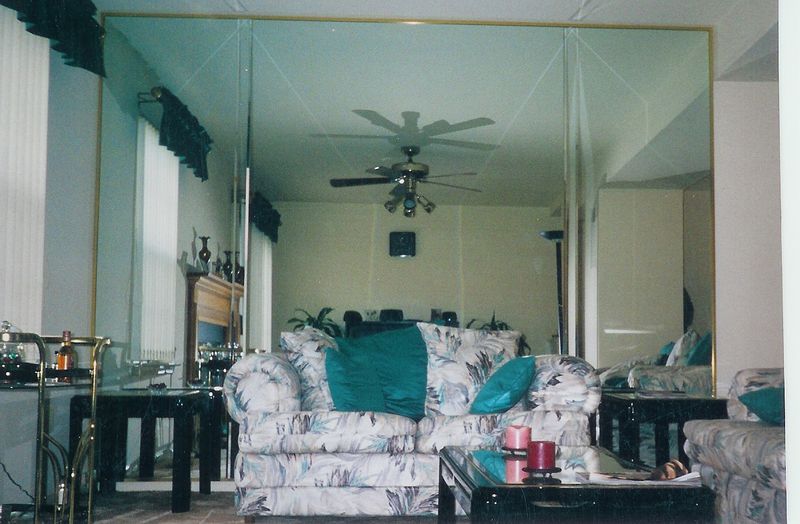
My uncle’s 1980s living room renovation featured mirror panels covering entire walls, creating what I called “the infinity room of awkwardness.” Walking into this reflective nightmare meant seeing yourself from thirty different unflattering angles simultaneously—a special kind of psychological torture device disguised as interior design.
These mirrored monstrosities supposedly “opened up the space” but actually just multiplied the visual chaos. Every lamp created dazzling light explosions, every piece of furniture appeared to exist in parallel dimensions, and every family gathering looked like a bizarro clone convention.
Keeping these mirrors streak-free required military-grade cleaning protocols and more Windex than should legally be allowed in one household. Yet behind all the impracticality lay a certain glamorous charm. These mirrored rooms captured a uniquely optimistic era when excess wasn’t just acceptable but celebrated.
8. Macramé Madness: The Knotty Takeover
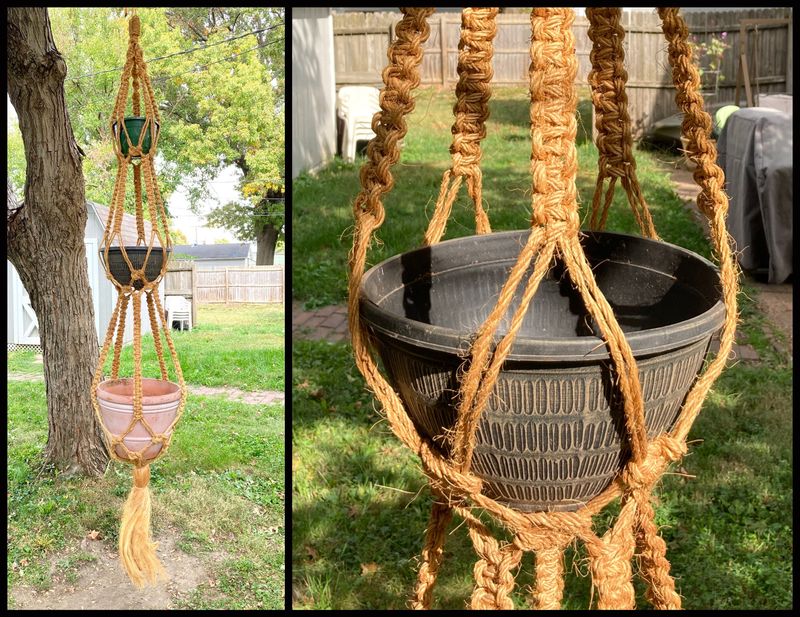
During the 1970s plant-parent revolution, my mother’s living room transformed into what can only be described as a macramé jungle. Hanging planters dangled from every available ceiling hook, their intricate knotted holders resembling elaborate spider webs spun by hippie arachnids with too much time on their hands.
These weren’t simple plant holders—they were architectural marvels of twisted jute that extended several feet downward, creating an obstacle course for taller visitors. The living room ceiling disappeared beneath a canopy of spider plants and wandering jews, their tendrils reaching down to tickle unsuspecting guests.
Maintaining this suspended garden required a stepladder, specialized watering techniques, and the patience of a saint. Yet these impractical hanging gardens created undeniably magical spaces that blurred the line between indoors and outdoors. The dappled light filtering through the foliage transformed ordinary living rooms into bohemian retreats.
9. Waterbeds in Living Spaces: The Wave-Making Loungers
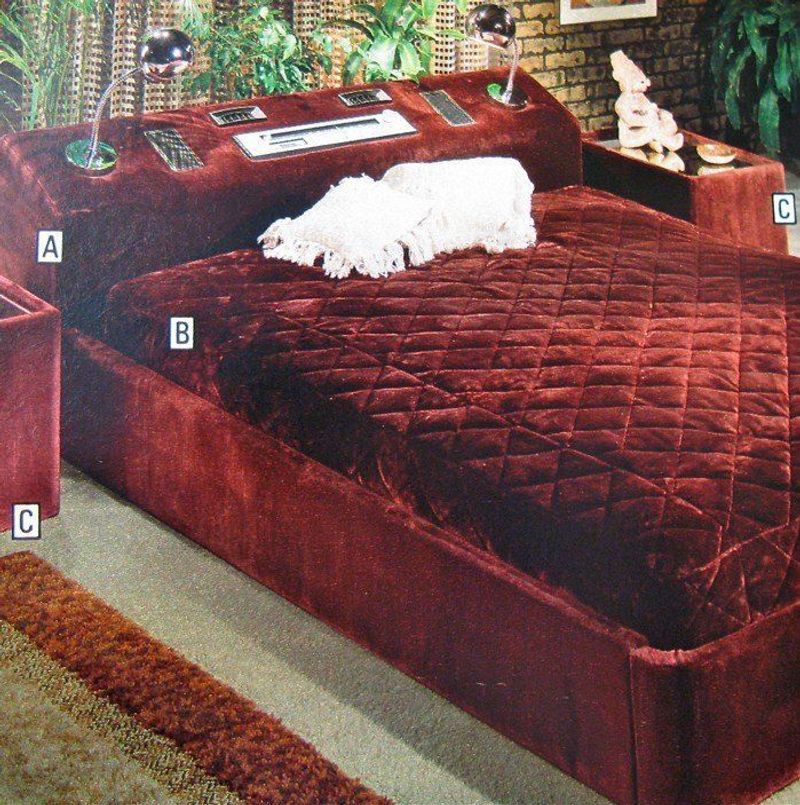
Nothing says “I make questionable decisions” quite like the family who installed a waterbed in their living room circa 1976. My cousin’s parents were those people, proudly showcasing their undulating vinyl masterpiece as the room’s centerpiece, complete with a built-in radio and mood lighting.
Sitting on these liquid loungers was an exercise in physics—one person’s movement created a tsunami effect that rippled across the entire surface. Spill prevention became an Olympic sport, and the constant sloshing sound provided an unusual soundtrack to every television show.
Maintaining these watery wonders required specialized chemicals, regular refilling, and occasional patching when the family cat decided to test its claws. Winter months brought the added adventure of potential hypothermia unless you invested in an expensive heater.
10. The Fern Bar Living Room: The Indoor Rainforest
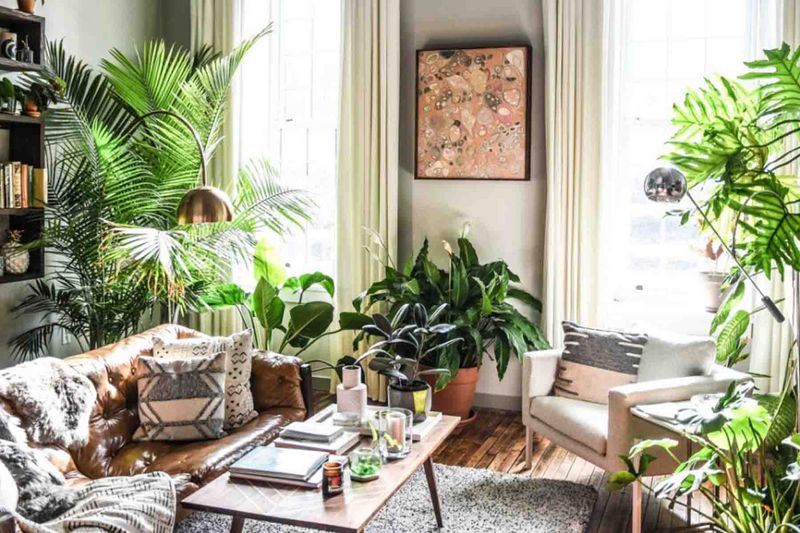
Inspired by trendy fern bars of the late 1970s, my parents transformed our suburban living room into a botanical nightmare that would make Tarzan feel right at home. Every horizontal surface disappeared beneath potted greenery—massive Boston ferns, fiddle-leaf figs, and rubber plants competed for dominance in this domestic jungle.
The humidity levels rivaled the Amazon rainforest, creating a microclimate that wreaked havoc on wood furniture and occasionally fogged up windows. Maintenance required a gardening schedule more complex than NASA launch protocols, with different watering and feeding requirements for each leafy roommate.
Finding the television remote in this verdant paradise became a daily expedition, often requiring machete-like precision to part the fronds without disturbing carefully arranged displays. Yet amid the impracticality, these indoor forests created spaces that felt alive and vibrant—literally breathing fresh oxygen into otherwise static rooms.
11. The Sunken Bar Nook: The Tipsy Trap
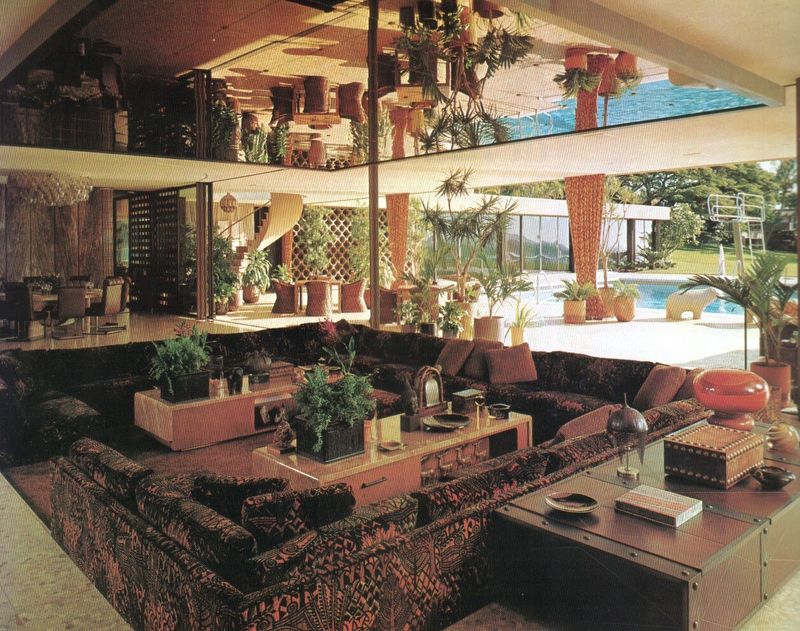
My parents’ friends had a living room featuring a sunken bar area that dropped approximately six inches below floor level—just enough to create a perfect tripping hazard after you’d enjoyed its offerings. This architectural booby trap, typically finished in dark wood paneling with brass railings, represented peak 1970s entertaining aspirations.
The mini-fridge hummed constantly, using enough electricity to power a small village, while the mirrored backsplash multiplied bottles of Kahlúa and Crème de Menthe into infinity. Swivel bar stools—always upholstered in slippery vinyl—created additional hazards for anyone attempting to dismount after a few Singapore Slings.
Maintaining this boozy command center required specialized cleaning products for different surfaces and regular restocking of cocktail napkins featuring terrible jokes. Yet these impractical drinking stations created undeniable focal points for social gatherings.
12. Swag Lamps and Chain Lighting: The Hanging Hazards
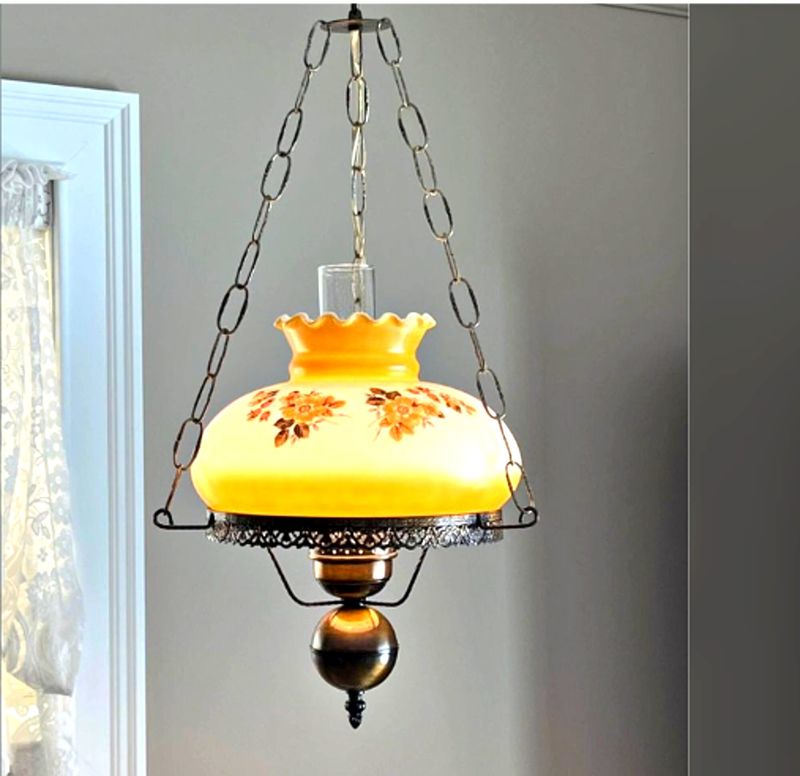
Walking through my grandmother’s living room required navigational skills worthy of an obstacle course champion. Her collection of hanging swag lamps—connected by decorative chains that crisscrossed the ceiling like electrical spider webs—dangled at precisely forehead height for anyone over 5’10”.
These illuminated pendulums, typically featuring amber glass, beaded tassels, or faux Tiffany shades, swung ominously whenever the heating system kicked on. Changing light bulbs became a circus-worthy balancing act requiring stepladders, steady hands, and a spotter to prevent catastrophic lamp domino effects.
Dust collected on these hanging monstrosities with supernatural efficiency, creating fuzzy halos around each light source until the seasonal cleaning ritual. Yet these impractical lighting schemes created undeniably magical environments.
13. The Giant Stereo Console: The Music Furniture Monster
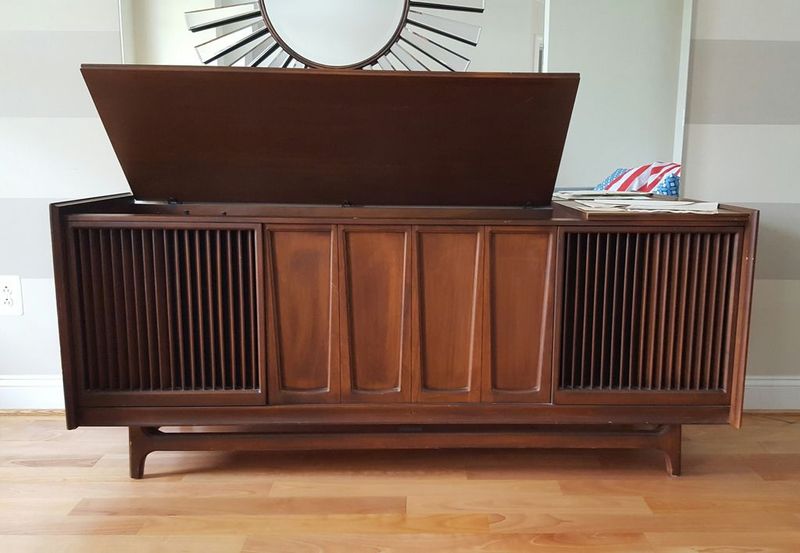
In 1972, my father invested in a stereo console roughly the size of a compact car, proudly positioning this walnut behemoth as our living room’s centerpiece. This musical furniture monster—housing a record player, 8-track, and radio behind hinged panels—produced approximately the same sound quality as today’s cheap Bluetooth speakers despite weighing roughly 300 pounds.
The top surface immediately became the family’s default display area for framed photos, decorative knickknacks, and occasionally forgotten drinks that left mysterious rings on the wood finish. Operating this audio dinosaur required specialized knowledge of its finicky controls and the patience to deal with records that skipped whenever someone walked too heavily across the room.
Dusting around the countless knobs and dials became a weekly archaeological expedition. Yet these impractical entertainment centers represented technological pride of ownership during an era when stereo equipment signaled sophistication.
14. Rattan Peacock Chairs: The Wicker Thrones
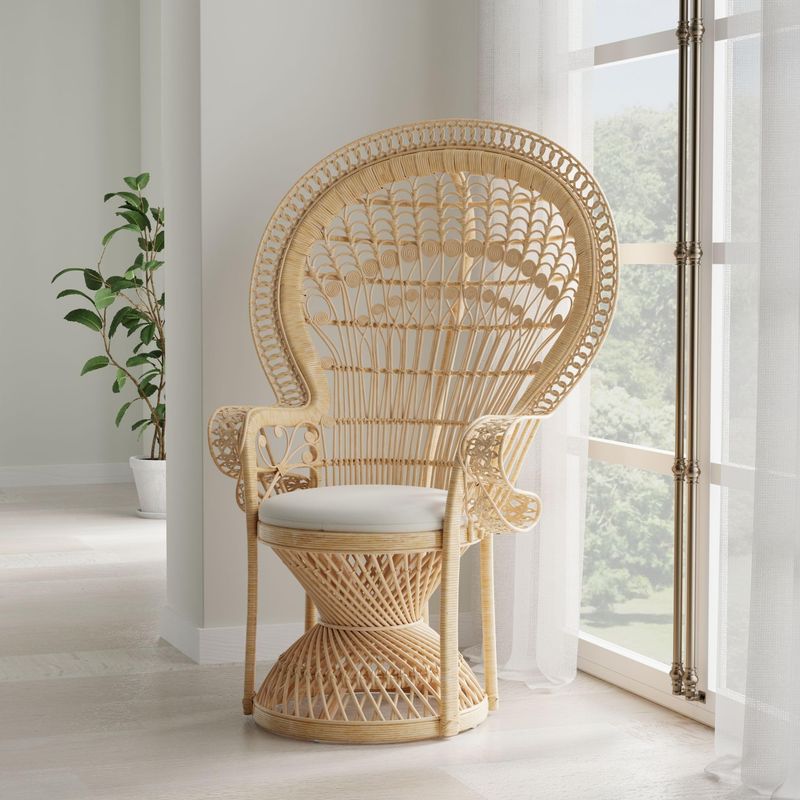
Nothing declared “I’m interesting” quite like the massive rattan peacock chair that dominated my aunt’s 1970s living room corner. This woven monstrosity—resembling a throne designed for tropical royalty—stood approximately six feet tall with its fan-shaped back extending like a wicker sunburst behind whoever was lucky enough to claim it.
Sitting in this ceremonial seat automatically made you the center of attention, whether you wanted it or not. The wide arms and deep seat created a human display case that somehow made everyone look simultaneously important and ridiculous. Moving this bulky masterpiece required disassembling doorways or windows, so once positioned, it became a permanent fixture around which all other furniture orbited.
The intricate weaving pattern collected dust with remarkable efficiency and occasionally snagged clothing or hair of unsuspecting sitters. Yet these impractical statement pieces created undeniable focal points that expressed personality before “personal branding” was even a concept.
15. The Sectional Sofa Maze: The Modular Madness
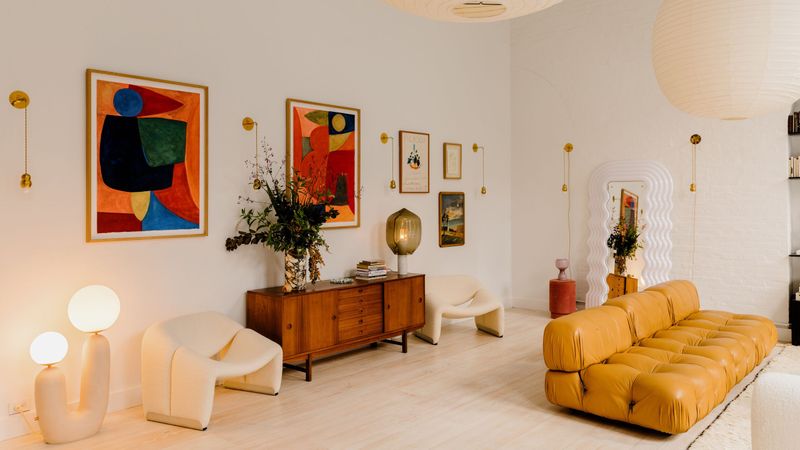
My neighbors’ 1980s living room featured a sectional sofa so complex it required an engineering degree to reconfigure. This beige microfiber labyrinth—comprised of approximately seventeen interlocking pieces—could be arranged into countless impractical formations, none of which actually facilitated normal human interaction.
The modular madness typically included at least one wedge-shaped corner piece that nobody knew how to sit on comfortably. Invariably, someone would attempt to separate sections during a gathering, creating sudden gaps that swallowed unsuspecting guests whole. The crevices between cushions formed perfect black holes for remote controls, loose change, and half-eaten snacks.
Vacuuming this furniture puzzle required disassembly worthy of a military operation. Yet these sectional monsters offered unparalleled flexibility for growing families and entertaining. The L-shaped configurations created natural conversation areas, while U-shaped arrangements transformed living rooms into movie theaters where everyone had front-row seats.
16. The Parquet Floor Playground: The Geometric Chaos
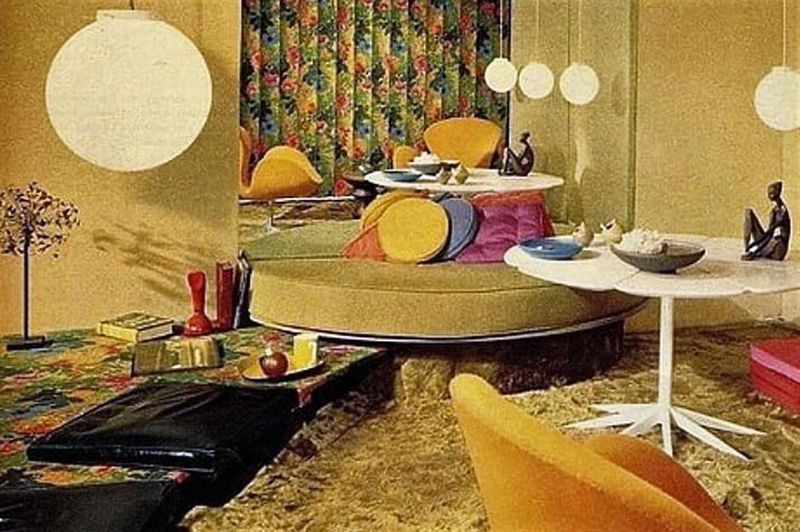
Walking into my childhood friend’s living room felt like entering a wooden kaleidoscope. Their parquet flooring—featuring interlocking geometric patterns in contrasting wood tones—created visual chaos that competed aggressively with every other design element in the room.
These dizzying diagonal squares, diamonds, and triangles made furniture placement a nightmare since every piece seemed to float on a sea of competing angles. The floors required specialized cleaning products and occasional professional refinishing that involved evacuating the premises due to toxic fumes.
Dropping small items on this wooden maze meant they’d instantly camouflage against the busy background. Yet these labor-intensive floors represented craftsmanship and attention to detail that’s rare in today’s quick-install options. The intricate patterns told stories of artisanal woodworking traditions and created warm, textured foundations that improved with age.
17. The Room-Dividing Plants: The Jungle Partition
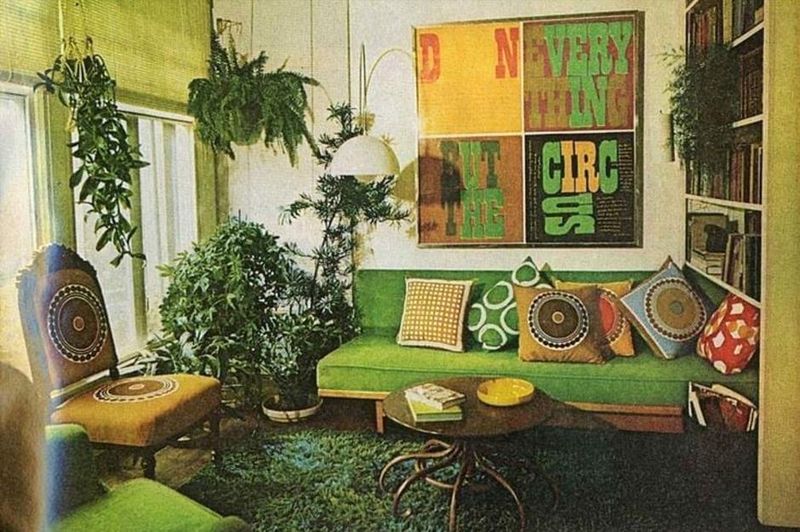
My first apartment featured the classic studio solution: a row of extremely tall houseplants strategically positioned to create the illusion of separate “rooms.” This botanical barrier—typically consisting of fiddle leaf figs, rubber plants, and the occasional palm—required the watering schedule of a professional greenhouse and the sunlight management skills of a NASA engineer.
These leafy roommates frequently outgrew their designated spaces, creating an ever-encroaching green wall that slowly consumed valuable square footage. Maintaining consistent growth required rotating the plants regularly, creating a constantly shifting landscape that disoriented visitors and occasionally blocked pathways entirely.
The soil inevitably spilled during watering sessions, creating mysterious dark spots on carpeting that landlords later questioned. Yet these living dividers brought natural beauty to otherwise boxy spaces and improved air quality while establishing zones without permanent construction. They created privacy without isolation and defined areas while maintaining openness.
